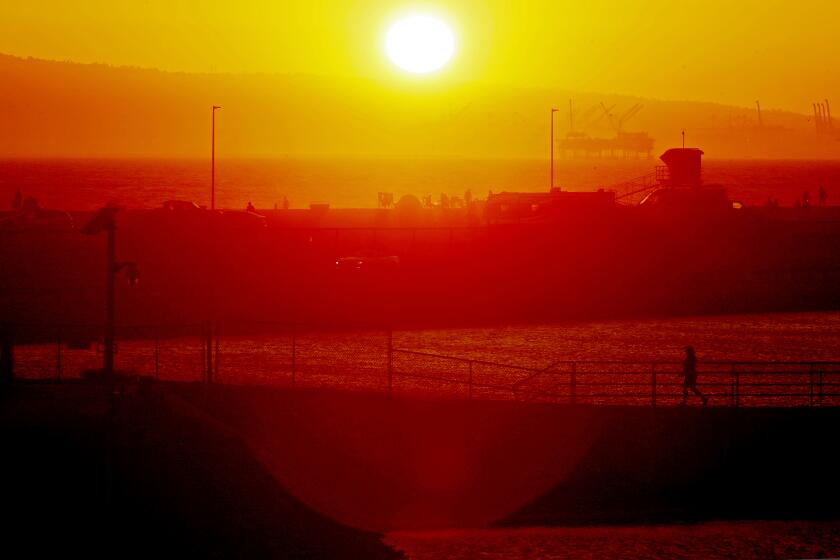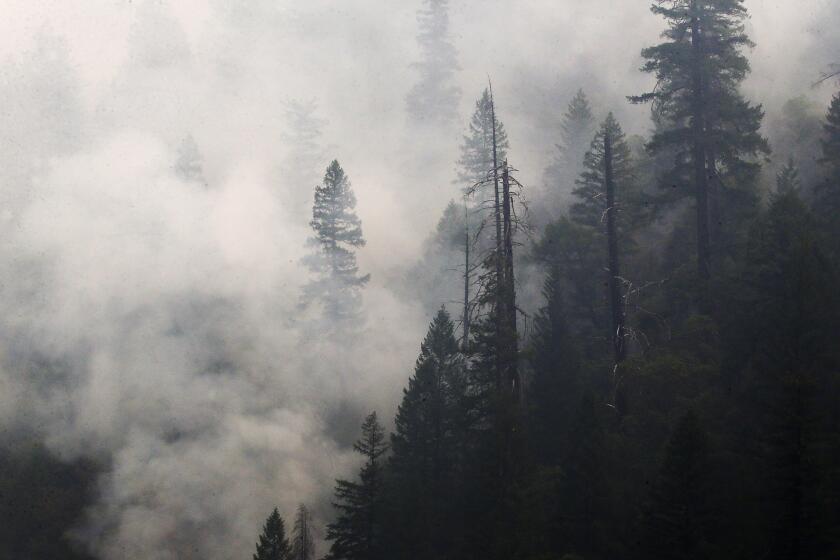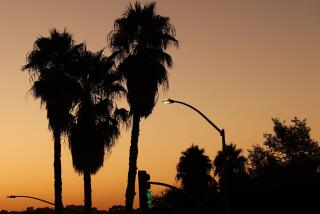Get ready for Southern California’s hottest and longest heat wave of the year

- Share via
A new week, a new month, a new heat wave — this one the hottest so far this year.
The National Weather Service has issued an excessive heat watch for much of Southern California, as temperatures are expected to hit triple digits this week and into Labor Day weekend.
This week’s excessive heat for the region will be the warmest and longest heat wave so far this summer, said David Sweet, a meteorologist for the National Weather Service in Oxnard, adding that record temperatures are possible.
A large dome of hot air sitting over Central and Southern California is driving the heat wave, Sweet said.
What are heat-related illnesses and how are they treated? Are they preventable or inevitable? We talked to health experts for the answers.
Forecasters predict temperatures will begin rising on Wednesday and run through Sunday, with the mountains, valleys and deserts in Los Angeles and Ventura counties predicted to reach 100 degrees or warmer. Woodland Hills could reach 110 degrees, and Burbank could reach 104 degrees Thursday. Lancaster in the Antelope Valley could reach 110 degrees.
Temperatures are expected to spike on Thursday and again Sunday.
Temperatures on the coast are expected to hover between 70 and 80 degrees. Downtown Los Angeles could see temperatures between 90 and 95 degrees Wednesday through Sunday, with 93 degrees expected for Thursday and 95 degrees expected Sunday.
An excessive heat watch is in place for much of Southern California this week. Keep yourself, your kids and your pets safe during hot temperatures with these tips.
Meteorologists are also expecting lower humidity over the next couple of days, which, combined with the extreme heat and dry vegetation, increases the fire danger.
The valleys to the mountains and, to a certain extent, deserts are a fire risk, because scorching outside air temperatures heat up vegetation closer to its ignition temperature, making it more flammable, meteorologists said.
According to the California Department of Forestry and Fire Protection, more than 5,000 fires have burned more than 200,000 acres across the state this year.
As wildfires become more extreme, some worry California will near a tipping point in which its forests emit more carbon dioxide than they absorb.
In parts of Orange County, temperatures could reach above 100 degrees, particularly in areas along the 5 Freeway extending east, said Brandt Maxwell, a meteorologist at the National Weather Service in San Diego. Temperatures are expected to be above 100 across the Inland Empire, Maxwell said.
“The question is how high it can go,” Maxwell said.
Despite the heat waves crossing into the western United States this summer, the coast has remained cooler because it has been protected by a marine layer, Brandt said. Temperatures in many coastal areas have largely stayed below 90 degrees.
“That should change this week,” Brandt said.
Swimming holes, ice cream and twilight hikes are your tickets for staying cool on your summer travels.
Heat waves are fairly common at the beginning of September, with high records at this time of year, Brandt said. Early next week is the most likely time to set records, though there could be some isolated records set this week, he added.
Excessive heat watch warnings indicate extreme heat is expected in certain areas, which could result in higher incidents of heat illness. People are advised to minimize their exposure to the outdoor heat, drink lots of water and stay indoors with air conditioning when possible.
More to Read
Sign up for Essential California
The most important California stories and recommendations in your inbox every morning.
You may occasionally receive promotional content from the Los Angeles Times.















